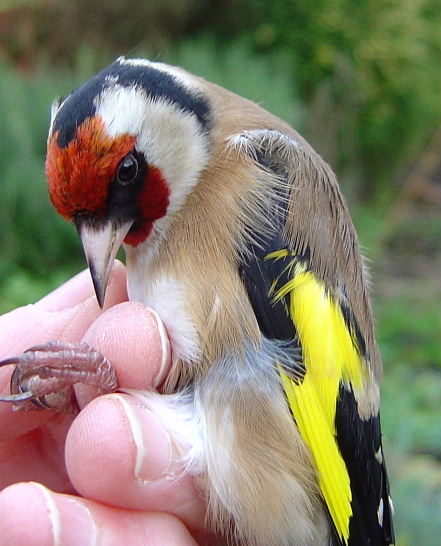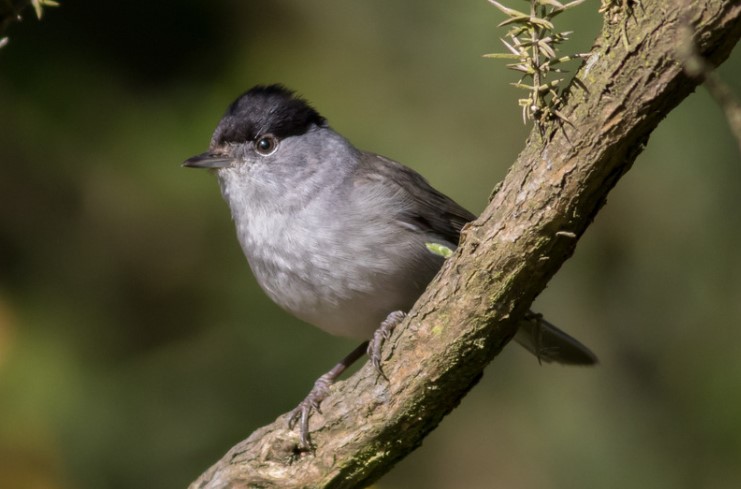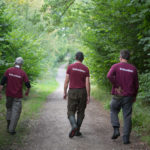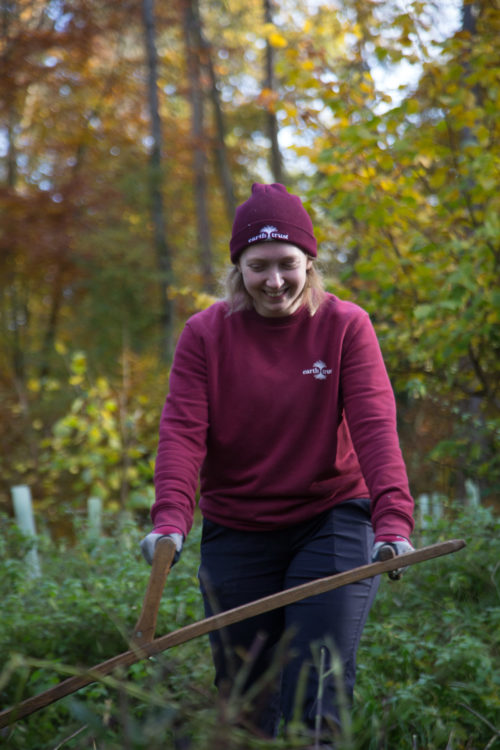Feathers and forecasts: Exploring bird life in Britain’s ever-changing climate
Bird migration is one of nature’s great wonders. Each year, millions of birds leave home taking on long, perilous journeys in search of food and safe breeding grounds. But, as the global climate shifts, sometimes the destination reached is not quite what was hoped for, as the habitats migratory birds depend on are in danger of changing or disappearing. The recent report on the state of the world’s birds, by Birdlife International, says that 1 in 8 bird species is at risk of extinction.
Bird species monitoring can offer hope – tracking progress and showing that conservation action really works.
Since 2000, Little Wittenham Wood has been designated as a CES (Constant Effort Site) for the nationwide BTO (British Trust for Ornithology) survey.
At Earth Trust, we are fortunate to have the support of skilled volunteers who dedicate hours of their time throughout the year, carefully monitoring and recording the various species found at our green spaces. George Candelin and Rev Prof Andy Gosler are trained, skilled and licensed Bird Ringers, and have been surveying the birdlife in Little Wittenham Wood since 2022 for a project looking at the breeding success of the bird population.
The data they collect is recorded with the nationwide BTO survey, allowing scientists to inform the Government and Conservation bodies of any significant changes in populations of the UK’s common breeding birds, helping to highlight vulnerable or declining populations.
George tells us, “The members of our ringing team undergo long and thorough training to catch and handle birds safely, to fit rings and to take biometric measurements; this allows us to undertake these activities that would otherwise be illegal under the Wildlife & Countryside Act 1984.”

Goldfinch bird monitoring
Here’s what we’re learning so far from Andy and George’s bird monitoring…
A woodland community
Little Wittenham Wood is a thriving woodland at the foot of Wittenham Clumps, along the banks of the River Thames.
Rich in biodiversity, the recent bird surveys have identified 28 species of birds in the wood in the summer, including resident birds such as blue tits and woodpeckers, and visitors from overseas including chiffchaffs and blackcaps.
“On a summer morning, the sounds of birdsong, the scents of the blossom and the peaceful ambience are so different to the noise and bustle of everyday life and make it a joy to work in these surroundings.” George Candelin

Chiffchaff

Blackcap
Changing climate
Local weather and regional climate patterns strongly influence birds’ behaviour and survival in both their breeding and non-breeding seasons.
A gentle, wet spring in 2022 provided plenty of food, helping the birds to get ready for breeding. But dry spells and above-average temperatures dominated the summer, culminating in a scorching August marked by relentless heatwaves. Met Office data shows that 2022 was the UK’s warmest year on record.
On the flip side, 2023 had a chilly, wet, and blustery start to the year. The summer months turned quite turbulent with a tapestry of summer storms and persistent cool, wet, and windy weather. 2023 was another warm year overall, but also the sixth wettest year in series on record with 20% more rainfall than average.
With high temperatures, drought, back-to-back storms, cold snaps, and floods, nature, like us, is having to cope with an array of weather extremes as our climate is changing.
Resilient species
So, how did the birds at Little Wittenham Wood cope with these changing weather patterns?
Little Wittenham Wood’s bird community reacted differently to the erratic weather. While some species weathered the storm reasonably well, early breeders like blackbirds, long-tailed tits, robins, and song thrushes faced breeding setbacks due to the adverse weather conditions.
The number of new baby birds differed a lot between 2022 and 2023. Migratory birds like blackcaps, who come here for the summer, had half as many chicks in 2023 compared to 2022, possibly due to the stormy, wet weather. Blue tits and chiffchaffs had more chicks in 2023, showing the resilience of their species, adapting well to the changing conditions.
Action to nurture habitats
At Earth Trust, our woodland management approach is about creating as diverse a habitat as possible. In Little Wittenham Wood, you will see tall stands of coniferous trees which provide nesting habitat for red kites and buzzards and feeding space for goldcrests; you will see mature, broadleaved woodland with standing dead trees in which greater spotted woodpeckers will find their food. In the middle of the wood, our network of newt ponds attracts kingfishers, marsh tits and spotted flycatchers.
Senior Ranger Tim explains, “By using various management techniques such as coppicing, scalloping (coppicing a section alongside a ride or footpath), thinning (removing a percentage of trees to allow others to grow) or non-intervention (allowing the wood to do its own thing) we create this varied mosaic of habitats for a wide variety of bird life along with other wildlife found in the woods.”
The first two-year snapshot this project provides might not give the whole story, and we certainly need more years of data to understand how bird populations change over time, but it is encouraging to see that the total number of birds seen at Little Wittenham Wood has stayed quite similar, showing that bird populations here are pretty stable.
Nature is increasingly unpredictable, and weather plays a vital role in deciding the destiny of our woodland inhabitants. As we continue learning about the story of birds in Little Wittenham Wood, our volunteer researchers are eager to unravel more about how they cope with the ever-changing British weather.
Ways to get involved
- You can report interesting bird sightings by participating in BirdTrack – an exciting project that looks at migration movements and distributions of birds throughout Britain and Ireland. Created through a partnership between the BTO, the RSPB, BirdWatch Ireland, the Scottish Ornithologists’ Club and the Welsh Ornithological Society, it’s free, easy and fun to take part. Find out more at: www.bto.org/our-science/projects/birdtrack
- Join in the RSPB’s Big Garden Birdwatch – the world’s largest garden wildlife survey – at the last weekend of January every year. Find out how to sign up by visiting the RSPB website www.rspb.org.uk
- Put up birdhouses or nesting boxes to provide a sheltered place to rest, and provide clean, fresh water. If you have a bird bath, make sure to disinfect it regularly with animal-safe products. Some birds will fly incredible distances during migration, often flying for weeks at a time and covering thousands of miles. This uses up a lot of energy, so your help can be vital to support them on their way.
Take a look at our infographic showing how birds come and go from the woods throughout the year.


Image credit: Nick Warner